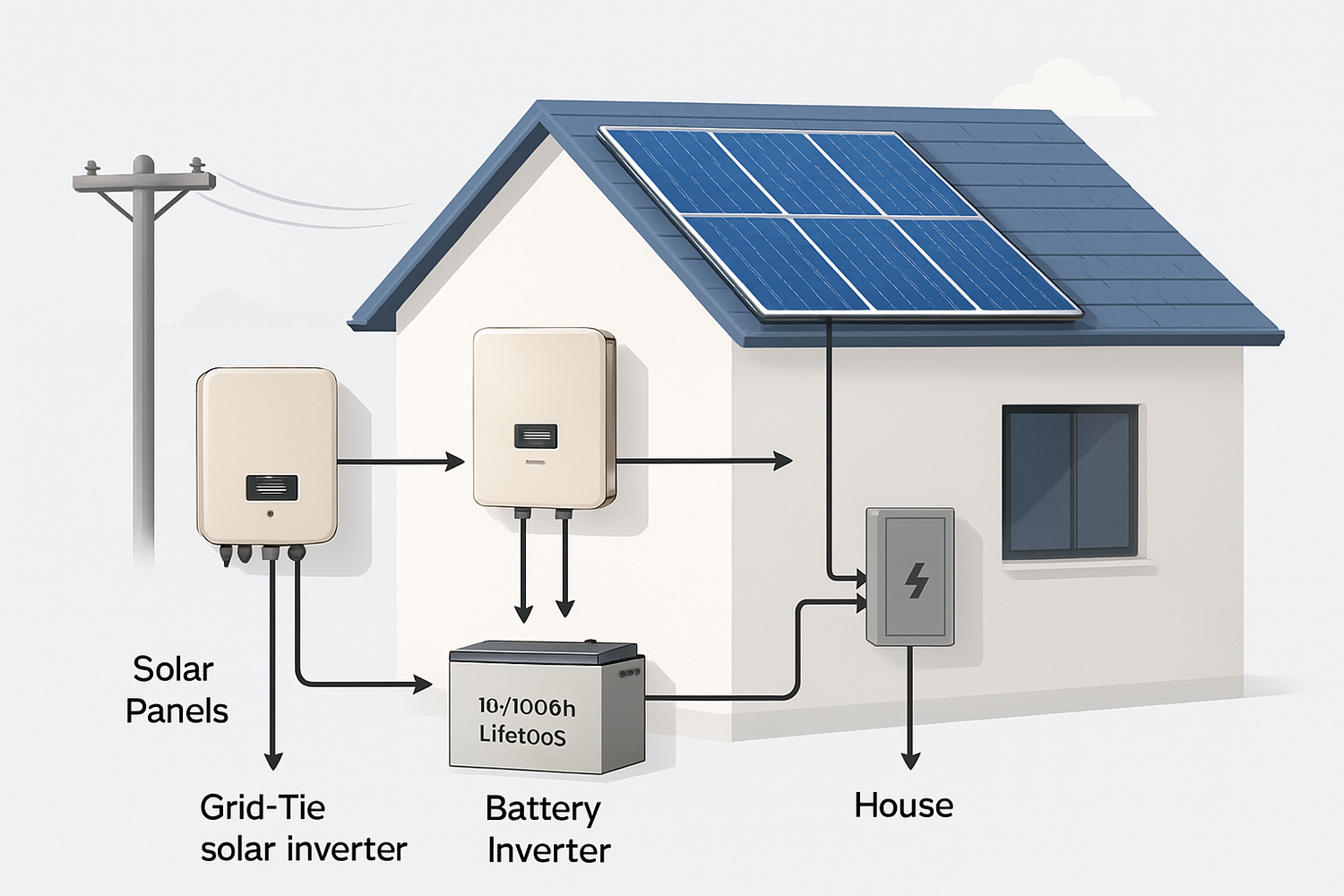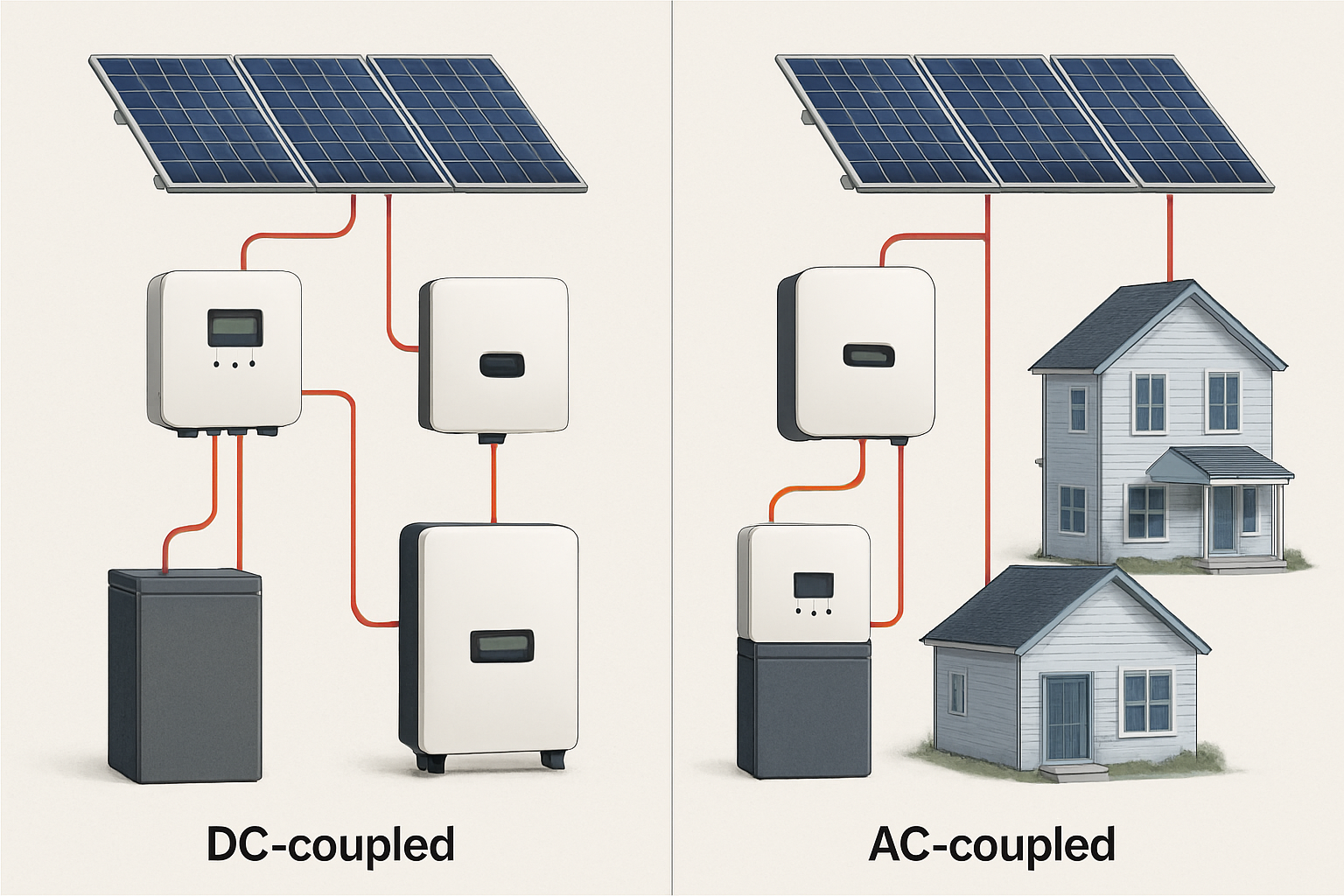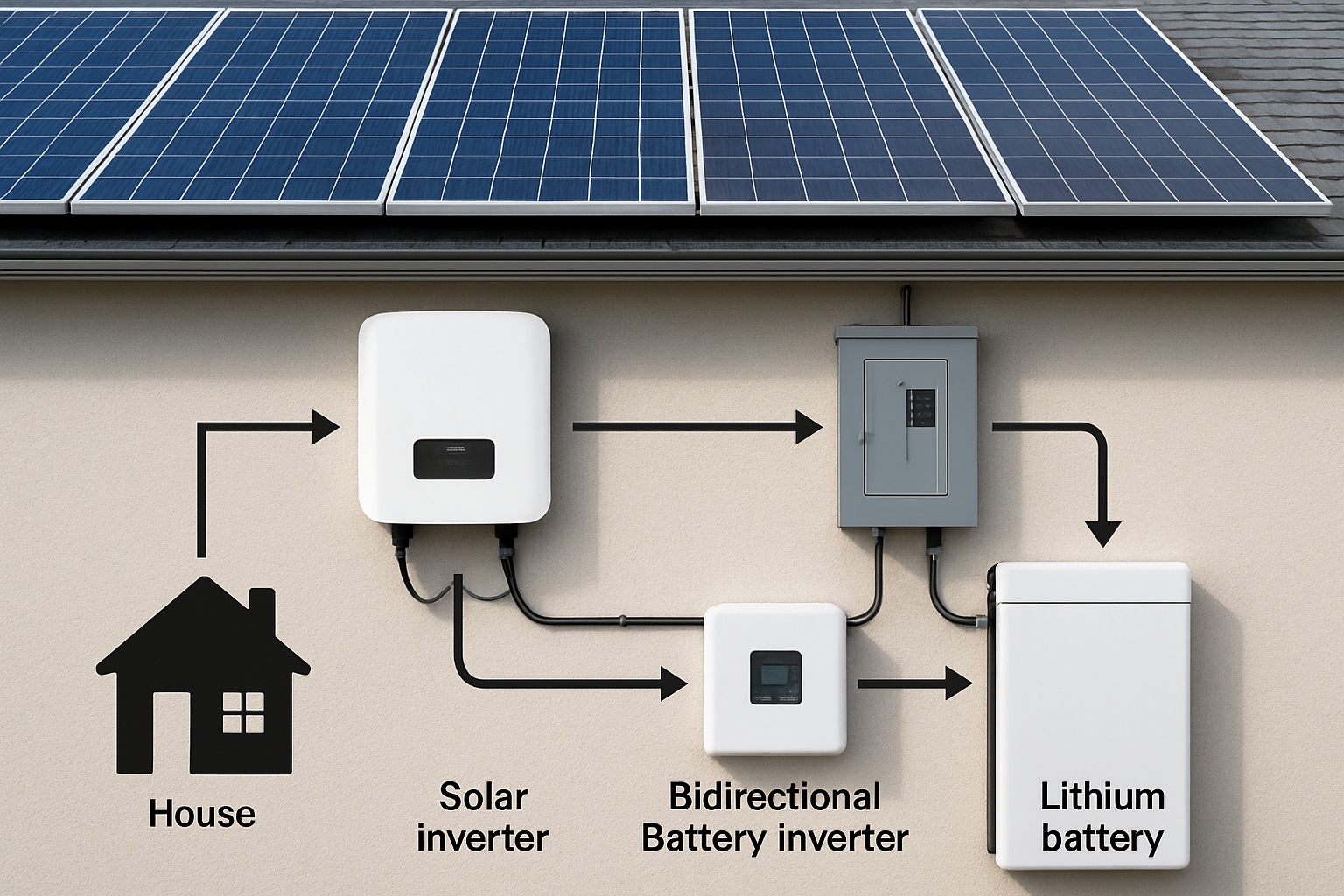Many homeowners with existing solar panel systems look for ways to increase their energy independence. Adding battery storage is a logical next step, allowing you to store excess solar energy for use at night or during power outages. An AC coupled retrofit offers a straightforward path to achieving this, and this case study examines a real-world application using a 12V 100Ah lithium battery.
Understanding the AC Coupled Approach
An AC coupled battery system is a method of adding energy storage to an existing grid-tied solar installation. It connects the battery to the alternating current (AC) side of your electrical system, working in parallel with your current solar setup.
What is an AC Coupled Battery System?
Solar panels produce direct current (DC) electricity. In a standard grid-tied system, a solar inverter converts this DC power to AC power for your home's appliances. In an AC coupled system, a second inverter, a battery inverter, is added. This inverter manages the battery, converting surplus AC power from your solar array back into DC to charge the battery. When you need that stored power, the battery inverter converts it back to AC for your home to use. This design makes it highly compatible with nearly any existing grid-tied solar system, as it doesn't require replacing the original solar inverter.
Key Components in an AC Coupled Retrofit
A successful AC coupled retrofit involves a few essential components working together:
- Existing Solar Inverter: Your original inverter continues its job of converting DC solar power to AC.
- Battery Inverter/Charger: This is the brain of the storage system. It manages the flow of electricity to and from the battery.
- Battery Pack: The core of the system, such as a 12V 100Ah Lithium Iron Phosphate (LiFePO4) battery, stores the energy.
- Energy Meter (CT Clamps): These devices monitor the flow of electricity to and from the grid, telling the battery inverter when to charge or discharge.
The Case Study: System Overview and Goals
This case study focuses on a common scenario: a household with an operational grid-tied solar system seeking to add resilience and reduce grid reliance without a complete system overhaul.
Project Background: Upgrading a Grid-Tied System
The subject is a home with a 5kW solar panel array. The system effectively reduced electricity bills, but the homeowners wanted to capture the excess solar energy generated during the day for evening use. They also desired a backup power source for essential appliances during grid failures. An AC coupled retrofit was chosen for its simplicity and cost-effectiveness, as it allowed them to keep their high-quality, existing solar inverter.
Choosing the Right Battery: The 12V 100Ah LiFePO4 Advantage
The heart of this upgrade is the 12V 100Ah LiFePO4 battery. This specific chemistry and size were selected for several reasons. Lithium Iron Phosphate batteries are known for their exceptional safety and thermal stability, reducing the risks associated with overheating. They also offer a long cycle life, often between 2,000 and 5,000 cycles, ensuring durability for daily use. A 12V 100Ah battery provides about 1.28 kWh of energy, which is ideal for powering essential loads like lights, routers, and small appliances for several hours. For this project, two batteries were installed in parallel to provide a larger energy reserve.
The Retrofit Process and Performance
The installation and subsequent performance demonstrate the practical benefits of this AC coupled solution.
Installation and Integration Steps
The retrofit process was completed with minimal disruption. An electrician installed the battery inverter next to the main electrical panel. The 12V 100Ah lithium batteries were connected to this inverter. Current transformers (CTs) were clamped around the main grid lines to monitor power flow. Once installed, the system was configured to prioritize self-consumption of solar energy, charging the batteries with any surplus power before exporting to the grid.
Performance Analysis: Before and After
The impact of the battery system was immediate and measurable. By storing midday solar energy, the household significantly reduced its reliance on the grid during evening peak hours. This shift is critical for maximizing the value of a solar investment. As noted in the Ultimate Reference on Solar Storage Performance, understanding metrics like self-consumption rate and round-trip efficiency is key to evaluating a system's effectiveness. The LiFePO4 batteries in this system achieve a high round-trip efficiency, ensuring minimal energy is lost during the charge and discharge cycles.
| Metric | Before Retrofit | After Retrofit |
|---|---|---|
| Daily Grid Import (Average) | 12 kWh | 3 kWh |
| Solar Self-Consumption | 35% | 80% |
| Backup Power Availability | None | Up to 6 hours for essential loads |
Navigating Challenges and Considerations
While AC coupling is versatile, there are considerations. There is a small efficiency loss because energy is converted multiple times (DC-AC by the solar inverter, then AC-DC for battery charging, and DC-AC for use). However, modern inverters and high-efficiency LiFePO4 batteries minimize these losses. Proper system configuration is also vital to ensure the battery charges and discharges at optimal times.
Broader Implications and Future Outlook
This case study highlights a growing trend toward decentralized energy solutions that empower homeowners.
The Value of Energy Independence
Adding battery storage transforms a solar installation from a simple bill-reduction tool into a comprehensive energy resilience solution. The ability to maintain power during outages provides security and control. According to the International Energy Agency (IEA), battery storage is a critical technology for enabling the transition to renewable energy by providing flexibility and stability to the grid.
Scalability and Future Upgrades
AC coupled systems are inherently scalable. The homeowners in this case study can easily expand their storage capacity by adding more 12V 100Ah lithium batteries in parallel. As their energy needs evolve, the system can grow with them without requiring a complete redesign. This modular approach makes it a future-proof investment in a home's energy infrastructure.
A Practical Path to Energy Resilience
This case study confirms that an AC coupled retrofit with a 12V 100Ah lithium battery is an effective and accessible strategy for upgrading an existing solar system. It enhances energy self-sufficiency, provides reliable backup power, and maximizes the financial returns of solar panels. As battery technology continues to improve and costs decline, these solutions offer a clear and practical path for homeowners to achieve greater energy resilience.
Frequently Asked Questions
How does an AC coupled battery system work with an existing solar installation?
An AC coupled system adds a battery and a separate battery inverter to your home's AC electrical panel. It works alongside your existing solar inverter. During the day, surplus solar energy that would normally go to the grid is converted to AC by your solar inverter, then converted back to DC by the battery inverter to charge the battery. When needed, the battery discharges DC power, which the battery inverter converts to AC for your home to use.
Is a 12V 100Ah lithium battery enough for a home?
A single 12V 100Ah battery provides approximately 1.28 kWh of storage. This is suitable for running essential small loads during an outage or for shifting a few hours of energy use. The system's value lies in its scalability; you can parallel multiple batteries to increase your total storage capacity to match your home's specific needs.
What is the main advantage of an AC coupled retrofit?
The primary advantage is compatibility. You can add an AC coupled battery system to almost any existing grid-tied solar installation without replacing the original solar inverter. This makes it a simpler and often more cost-effective upgrade path compared to a DC coupled system, which would likely require a new, compatible hybrid inverter.





Leave a comment
All comments are moderated before being published.
This site is protected by hCaptcha and the hCaptcha Privacy Policy and Terms of Service apply.